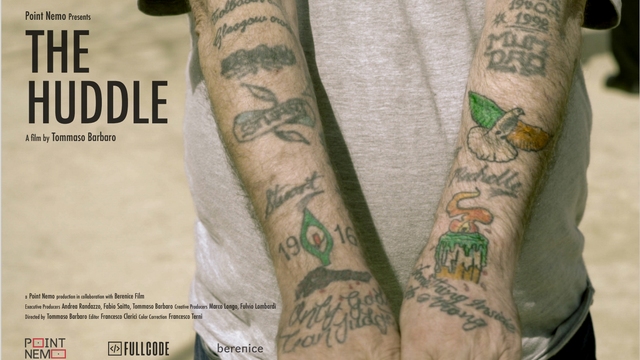The Producers

Tommaso Barbaro - Director
Tommaso Barbaro is a sound designer. Graduated from the Luchino Visconti Civic School of Cinema, he has worked on countless productions in every sector of the audiovisual sector, from television to post-production, from direct capture to 5.1 mixing for cinema.
For the big screen he collaborated on the films of Silvio Soldini, Luca Lucini, Marina Spada, Massimo D’Anolfi and Martina Parenti, Giorgio Diritt. The film Spira Mirabilisdi D'Anolfi e Parenti, of which he edited the sound, participated in the International Competition during the 73rd Venice Film Festival.
Other films he collaborated on as sound editor, sound engineer and sound designer, include Io sto con la sposa, My Mother’s Breakdown, Berni and the Young Pharaoh, Ferrari 312b, La convocazione, Magic Alps, Yvonne, all works selected and awarded in major international film festivals. His interest in teaching sees him in charge of high specialization schools, including the Experimental Center of Cinematography in Milan and ZeLIG in Bolzano, while since 2016 he has been collaborating with the HES-SO / Haute Ecole Arc Ingénierie Saint-Imier university at the Computer Graphics department for sound design and sound programming of videogames applied to different devices such as tablets and VR360.
The Huddle is his first film experience as a director and author.
Making The Film

Director's Statement
The idea of the documentary was born a few years ago, when we found ourselves, almost by chance, watching a Celtic game at the Meazza stadium in Milano. We immediately perceived that what was around us was a singular community, so similar but at the same time so distant from the archetype of football supporters that we know from our Italian experience. At that time we understood only very superficially the historical and cultural complexity that belongs to this community, the different themes and values that stratify under the most immediate football surface. The idea of the documentary as it appears today has matured over time, after a personal journey that lasted two years, which made us constantly immerse ourselves in the Irish community to study it from within. We have gradually felt the desire to document in a holistic way a community, the Irish one, characterized by a very specific cultural and social identity, which in turn fits into a wider but at the same time rather particular social context, such as that which is located in Glasgow and Belfast. The spectator's journey reflects ours, to discover this community.
The starting point is the moment of a football faith so vibrant and thunderous as to oppose with arrogance to the description of the Glasgow and Belfast newspaper punctuated by moments of repeated and at times bleak solitude. Once we set the story inside the community and we breathed the values around which it is founded, we wanted to document and deepen the various themes from within, giving space to the voices of the main protagonists of this cosmos, each of whom with a specific role and with the personal affairs and their connection with this sense of belonging. The choice of the hand-held camera was born from the human desire to search for a stable and reference space in the city spaces, and becomes more accentuated in the excited moments of football fans or parades. These shots - which represent the core of the film - are contrasted with those of the deserted cities slapped by the wind and melancholy, wide and stable. The void is taken up with the detached attitude of the tripod camera, while the fullness (or the desire to be part of it) in the empathic dimension of the hand camera.
The editing style aligns with the idea of shooting, and follows the dynamics and rhythms of a newspaper divided between participation and solitude, music and silences, testimonies and removals of the past. Serving two cities capable of changing nature and face in just a few hours, depending on the cultural, political and sporting events that animate them: inhospitable and lifeless places can quickly charge a vibrant atmosphere of participation and social demand. Music is the element that binds the different themes of the community: it is perhaps the central, recurring and even redundant glue in the everyday life of these cities. It therefore lends itself to being used as a dramaturgical tool to highlight cultural connections: the music we find in pubs, clubs, concerts, stadiums and parades is, in fact, mainly always the
same.
The film can be considered a documentary with an anthropological social and cultural perspective, which aims to give the viewer a portrait as faithful as possible to a singular but also symbolic community, to bring to life the sensations and the atmosphere that they
perceive within the Huddle.
 Though separated by a stretch of sea, Glasgow and Belfast share elements of political, sporting and religious culture rooted in the difficult, unresolved events faced by the Irish community during the twentieth century. The Huddle tells the stories of two Irish communities brought together by a devotion to the Celtic Football Club, and a shared faith in football. Exploring the contradictions between two cities facing radical ideological divides yet brought together by full stadiums, these are the interwoven and personal accounts of journalists, musicians, political militants, IRA fighters—all united by their love of football—on what it means to be Irish.
Though separated by a stretch of sea, Glasgow and Belfast share elements of political, sporting and religious culture rooted in the difficult, unresolved events faced by the Irish community during the twentieth century. The Huddle tells the stories of two Irish communities brought together by a devotion to the Celtic Football Club, and a shared faith in football. Exploring the contradictions between two cities facing radical ideological divides yet brought together by full stadiums, these are the interwoven and personal accounts of journalists, musicians, political militants, IRA fighters—all united by their love of football—on what it means to be Irish.








